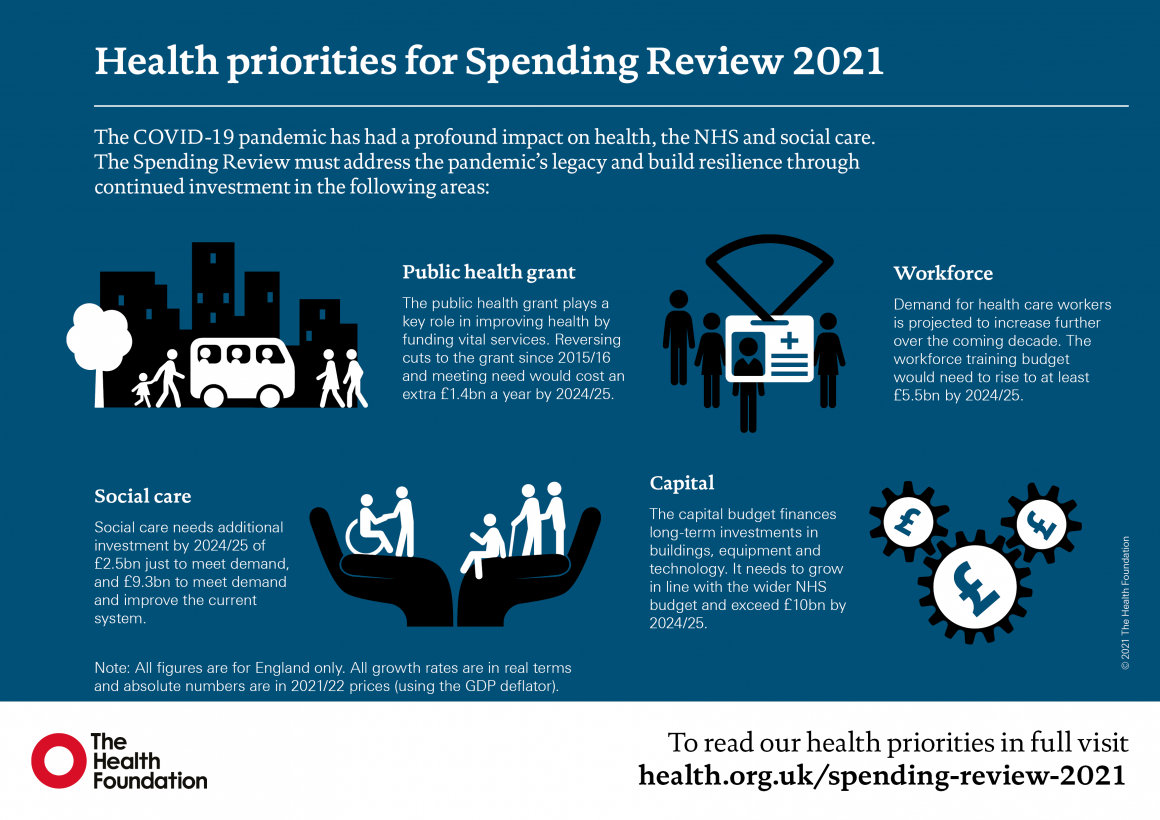Health priorities for Spending Review 2021
22 October 2021

- The COVID-19 pandemic has had a profound impact on population health, the NHS and social care.
- We highlight four priority areas that the Spending Review 2021 must invest in to address the pandemic's legacy and build resilience in health and social care.
Note: All figures are for England only. All growth rates are in real terms and absolute numbers are in 2021/22 prices (using the GDP deflator).
Public health grant
The pandemic has resulted in a range of risks to health, both immediate and longer-term. Within local authorities, the public health grant has a key role to play in improving health by funding vital services, such as smoking cessation, drug and alcohol services, children's health services and sexual health services, as well as supporting broader public health activities across local authorities and the NHS.
To restore the public health grant to its historic real-term per capita value and accounting for future cost pressures and demand would require an additional £1.4bn a year (in 2021/22 prices) by 2024/25. Phasing this in represents an average growth rate in the public health grant of 14% a year for the next 3 years.

Capital
The capital budget of the Department of Health and Social Care (DHSC) is used to finance long-term investments in the NHS in England. Capital investment plays a crucial role in delivering a safe, resilient and effective health care service.
As a minimum, the NHS capital budget would need to grow in line with current plans and then continue to increase in line with the wider NHS budget. The Department of Health and Social Care’s capital departmental expenditure limit (CDEL) would need to be more than £10bn in 2024/25, rising to around £12bn in 2030/31.

Workforce
The workforce is the most critical input for delivering health and care. Prior to the pandemic, vacancies were growing. Growth in demand for workforce over the coming decade is projected to be much higher than the last decade.
Action on every element of workforce supply is needed: training, attrition, recruitment (including overseas recruitment), and retention. The Health Education England (HEE) budget needs to keep pace with growth in the wider NHS budget. We estimate the HEE budget would need to rise to at least £5.5bn in 2024/25 and continue to increase to more than £6bn in 2030/31. This equates to growth of 3–4.1% a year in real terms between 2021/22 and 2024/25.

Social care
Although recent reforms to how social care is paid for are welcome, they will not be enough to deliver the prime minister’s promise to ‘fix social care’.
Once funding for the cap on care costs is taken into account, we estimate that the government’s recent announcement provides at most around £1.5bn a year to 2024/25 – compared with the £2.5bn needed just to meet demand and the £9.3bn needed to meet demand and to sustain and improve the current system.

Download our infographic
Read our full submission
Explore related content
Work with us
We look for talented and passionate individuals as everyone at the Health Foundation has an important role to play.
View current vacanciesThe Q community
Q is an initiative connecting people with improvement expertise across the UK.
Find out more


